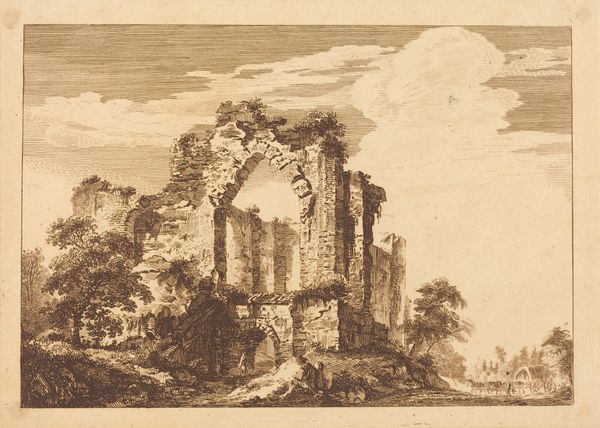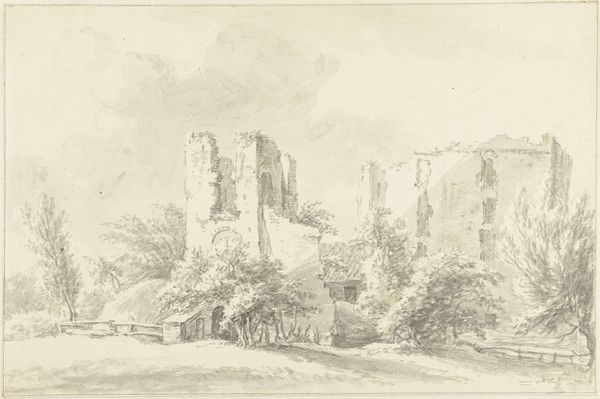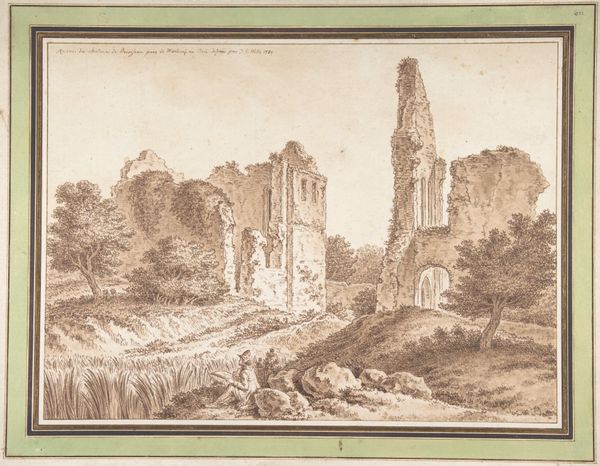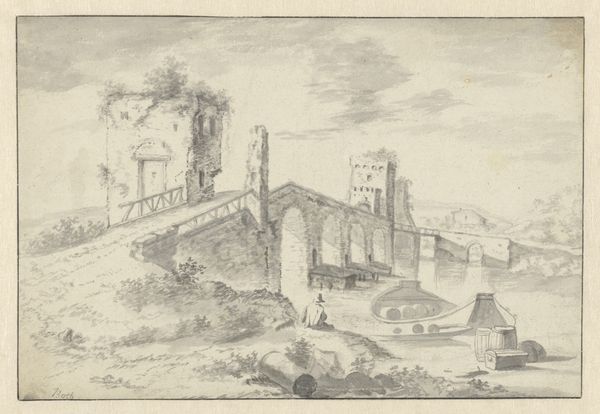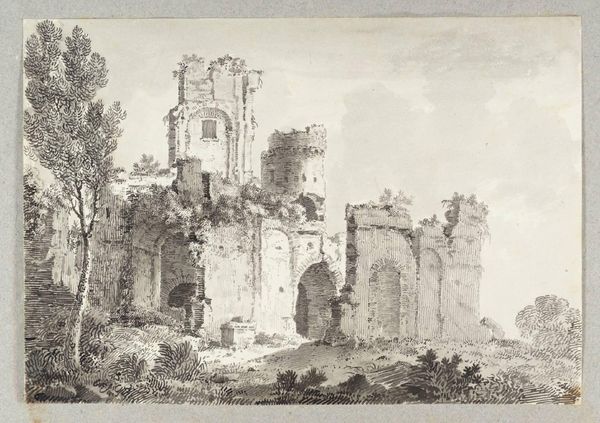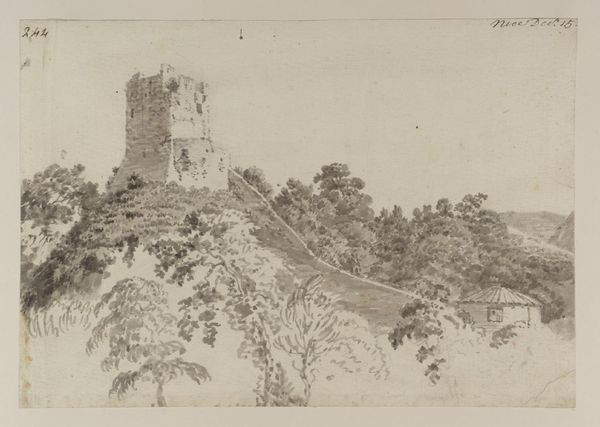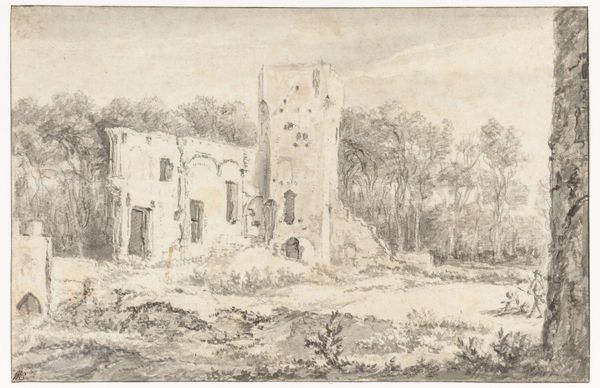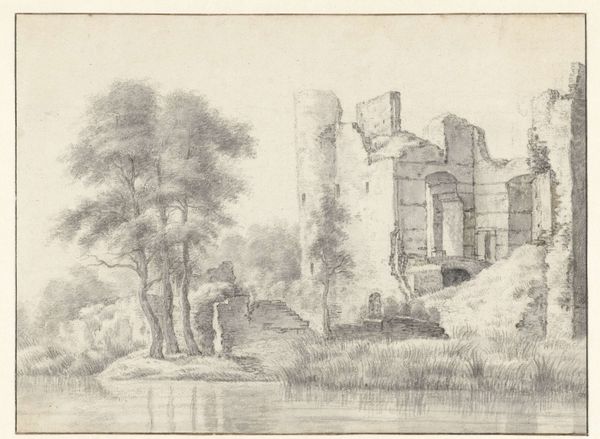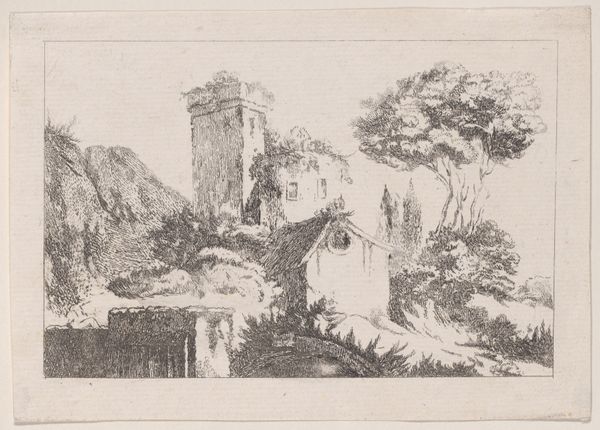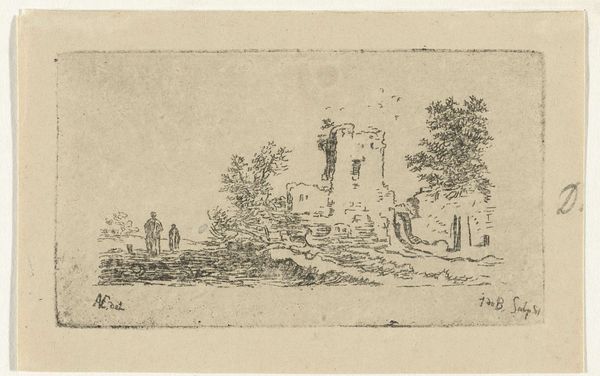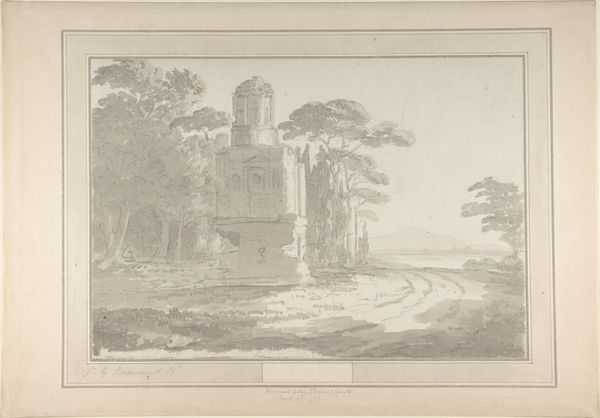
Dimensions: support: 237 x 390 mm
Copyright: CC-BY-NC-ND 4.0 DEED, Photo: Tate
Editor: This drawing, "Amberley Castle, Sussex, after Edward Dayes," by T. Moore, appears to be a rather somber rendering in ink. What strikes me is how the architecture almost melts into the landscape. What do you see in this piece? Curator: It's fascinating to consider how ruins like Amberley Castle became popular subjects. This piece reflects the late 18th-century's growing fascination with the medieval past, fueled by political and social anxieties about modernity. Moore's rendering, based on Dayes' work, participates in constructing a visual narrative of a romanticized, yet decaying, past. Editor: So, its appeal wasn't just aesthetic, but rooted in anxieties of the time? Curator: Precisely. The picturesque quality of the ruin, carefully framed, also served as a commentary on power, history, and even national identity, shaping how people perceived their connection to the past and place. Editor: That gives me a lot to consider about the role of landscape in art! Curator: Indeed, it highlights how art actively shapes our understanding of history.
